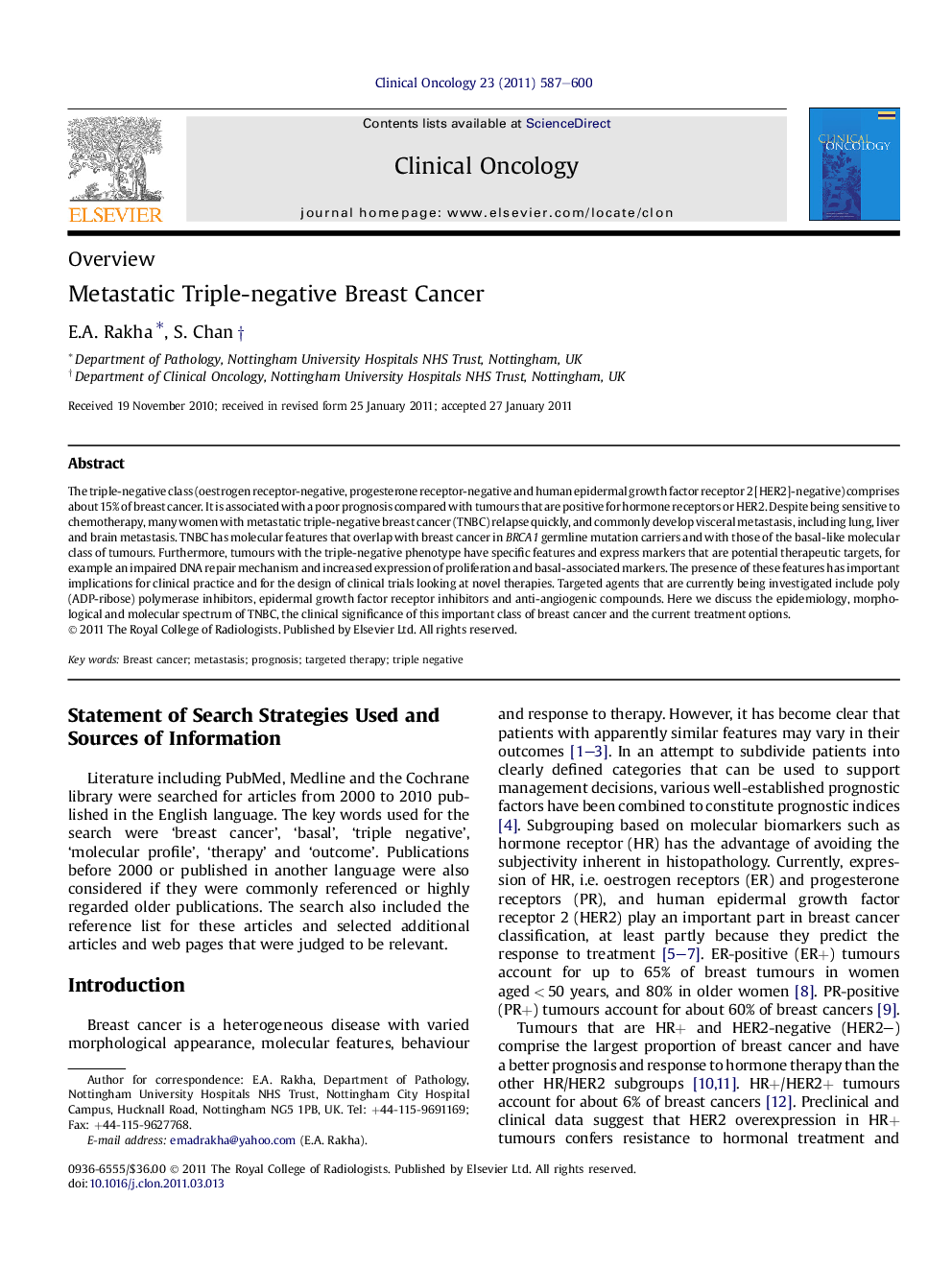| Article ID | Journal | Published Year | Pages | File Type |
|---|---|---|---|---|
| 5698680 | Clinical Oncology | 2011 | 14 Pages |
Abstract
The triple-negative class (oestrogen receptor-negative, progesterone receptor-negative and human epidermal growth factor receptor 2 [HER2]-negative) comprises about 15% of breast cancer. It is associated with a poor prognosis compared with tumours that are positive for hormone receptors or HER2. Despite being sensitive to chemotherapy, many women with metastatic triple-negative breast cancer (TNBC) relapse quickly, and commonly develop visceral metastasis, including lung, liver and brain metastasis. TNBC has molecular features that overlap with breast cancer in BRCA1 germline mutation carriers and with those of the basal-like molecular class of tumours. Furthermore, tumours with the triple-negative phenotype have specific features and express markers that are potential therapeutic targets, for example an impaired DNA repair mechanism and increased expression of proliferation and basal-associated markers. The presence of these features has important implications for clinical practice and for the design of clinical trials looking at novel therapies. Targeted agents that are currently being investigated include poly (ADP-ribose) polymerase inhibitors, epidermal growth factor receptor inhibitors and anti-angiogenic compounds. Here we discuss the epidemiology, morphological and molecular spectrum of TNBC, the clinical significance of this important class of breast cancer and the current treatment options.
Related Topics
Health Sciences
Medicine and Dentistry
Oncology
Authors
E.A. Rakha, S. Chan,
